#rokurota
Text






#gabimaru the hollow#rokurota#jigokuraku#hell’s paradise#anime#anisource#dailyanimatedgifs#dailyanime#fyanimegifs#my gif#useradrienne#userdabiluna#usermica
124 notes
·
View notes
Text
"the Warrior, the Princess & the Peasants"
Hidden Fortress (1958)
The Akira Kurosawa movie that inspired the structure and some of the character dynamics in the first Star Wars film. The main characters are:
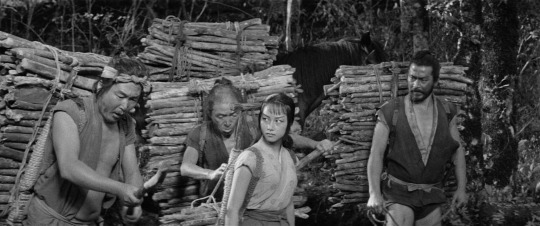
Matashichi and Tohei, the two serfs whose eyes most of the picture is viewed through, Princess Yuki, an uppity young aristocrat on the run from the authorities, who constantly bickers with Toshiro Mifune's battle-hardened general Rokurota.

Star Wars (1973)
In the original concept of Star Wars, the dynamic stayed similar, although more characters were added to the mix.
But you still have the two droids, C-3PO and R2D2 (deriving from the peasants in Hidden Fortress), Princess Leia (loudmouth aristocrat on the run from the authorities), and Luke Skywalker (a battle-hardened general).
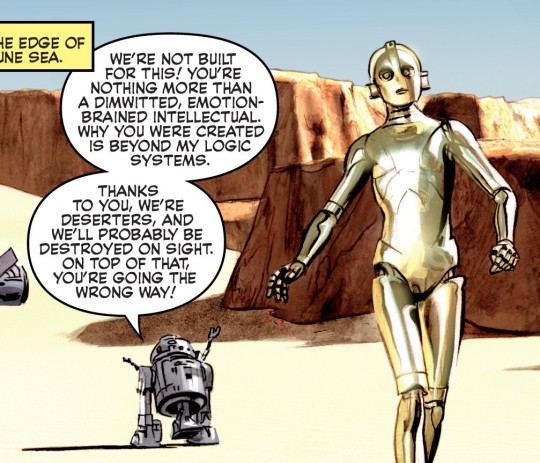
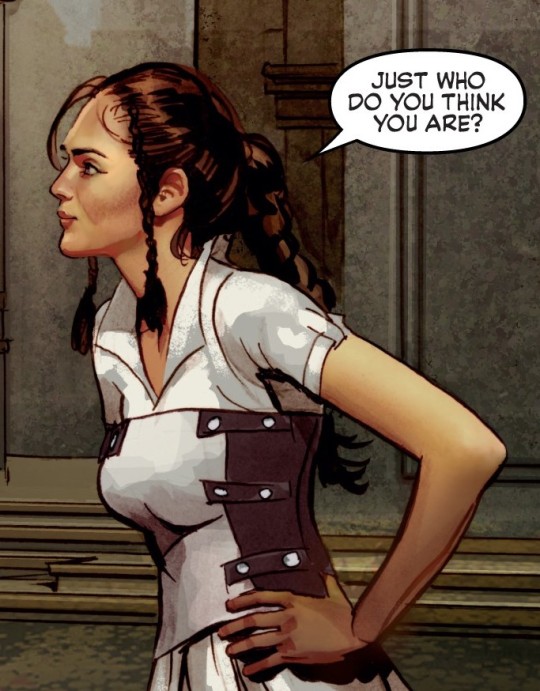
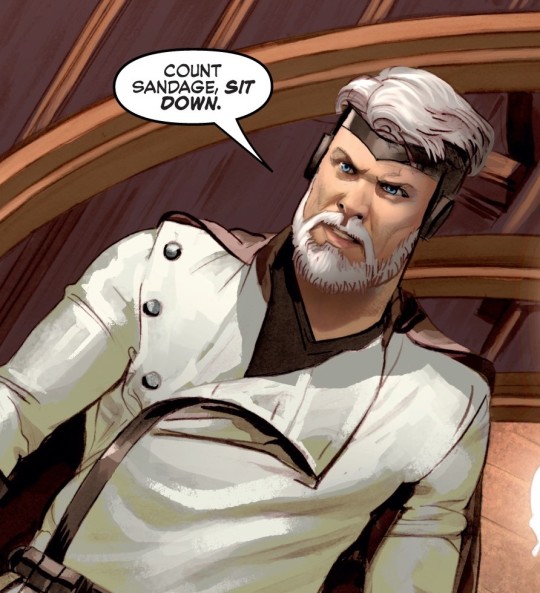
As drafts changed and plot details shifted, Luke Skywalker became the young protagonist, the general character became Obi-Wan Kenobi (whom Toshiro Mifune was originally considered for).
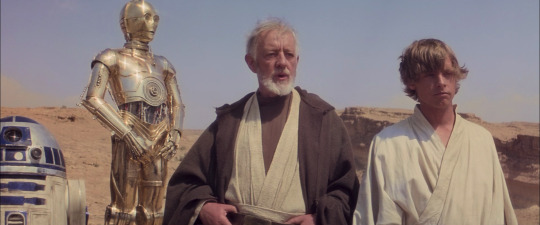
It's not a one-to-one copy, but there is clearly an inspiration. And when you look at the posters at the time?
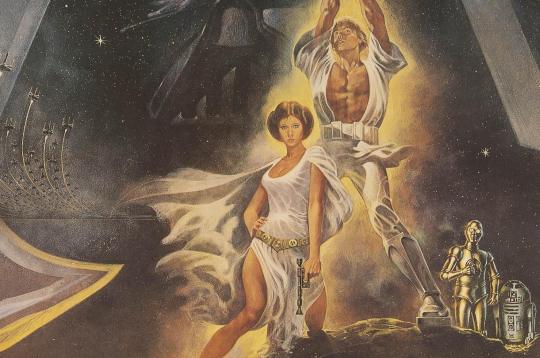
Still Luke, Leia, 3PO and R2.

The Phantom Menace (1999)
As already discussed here, in one of the early drafts of The Phantom Menace, Obi-Wan is the one who rescues the Queen from Naboo and finds Anakin on Tatooine. Qui-Gon only comes into the script once the gang gets to Coruscant.
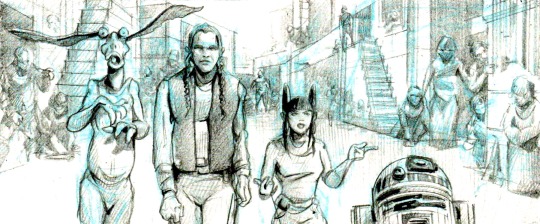
But in this early draft, Obi-Wan is an experienced warrior, who pushes the envelope, eliciting the complaints of princess Queen Amidala (the aristocrat on the run). When on Tatooine, the two "low-ranking" characters are still R2, this time with Jar Jar Binks.
Eventually, for multiple reasons, Obi-Wan was made the Padawan and Qui-Gon was put in early in the script.
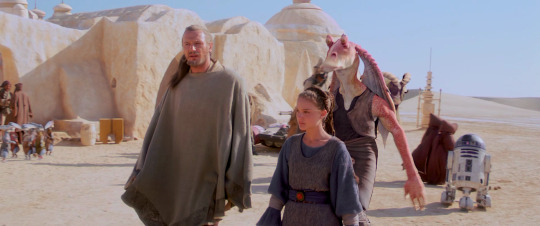
(Fun Fact: before this change was made, there was a draft where Obi-Wan stayed the elder, Qui-Gon was made the Padawan, and then Obi-Wan gets killed by Maul and young Qui-Gon takes on his name, going on to become Alec Guinness' Ben!)
But be it Qui-Gon or Obi-Wan, the warrior in The Phantom Menace is no longer a general with rank authority, he's just a diplomat.
The only reason he's able to do things "his way or the highway" is because 1) he is headstrong and 2) Padmé is undercover and doesn't wanna give it away (as if Qui-Gon and Obi-Wan hadn't already noticed...!)
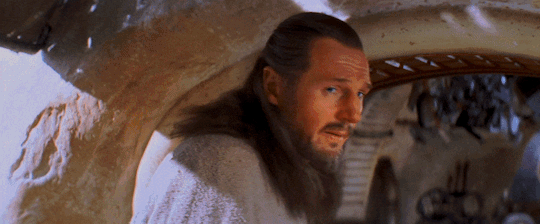
So here we have an interesting reversal of roles: in Hidden Fortress (and kinda in the first Star Wars film), the Princess is the chaotic hellion who must be reined in by the warrior, who's always screaming:
"Princess, ffs! Stop wandering off, they're actively looking for you!"
Here, the warrior is the one going off-book and the Queen is like:
"Stop this at once, you cheeky fellow! We're on the run!"
Finally, as covered in this lengthy post about how The Hidden Fortress informs us of the Jedi's standing within the Republic, Lucas makes it clear that he alternates between projecting the "peasant POV" archetype on the Jedi duo and Jar Jar & R2/Anakin.
There is no clear protagonist in The Phantom Menace, you just have four main characters: the Jedi (who are two separate characters, but functionally are basically one single character), Padmé and Anakin.

All of this to say that just like the themes, these archetypes also echo each other in more ways than one, and it's intentional. As Lucas puts it, it's like a symphony:
"I’m also doing very stylistic ideas, things that are very musical in terms of how I develop themes, and repeat themes. I go do the same thing over and over in certain areas to echo what I have done before. It’s like a symphony more than a movie."
- Star Wars Insider #35, 1997
"I'm approaching these films, for better or worse, like a symphony. I have a lot of themes that I keep repeating over and over again through the whole thing. Different notes and different instrumentation, but when you see all six movies together you'll see that there's a lot of recurring notes being played. [...] And it’s done on purpose. And it’s also done in different facets."
- Star Wars Insider #52, 2000
So yeah.
Just some fun similarities and tidbits I noticed, figured I'd share.
#the hidden fortress#akizuki clan#Princess Yuki#Princess Leia#Queen Amidala#Rokurota#Luke Skywalker#Qui-Gon Jinn#Obi-Wan Kenobi#star wars#akira kurosawa#George Lucas#bts tidbits
122 notes
·
View notes
Text


#hell’s paradise#jigokuraku#yuji kaku#jigokuraku mukai no mori#manga#mangacaps#aza chobe#aza choubei#yuzuriha#nurugai#warped keiun#keiun#akaginu#horubo#moro makiya#rokurota#jigokuraku spoilers#sagiri#shion#tenza#fuchi#aza toma#eizen#genji#senta#kisho#jikka#monochrome#mangaedit#manga aesthetic
80 notes
·
View notes
Text

9 notes
·
View notes
Text
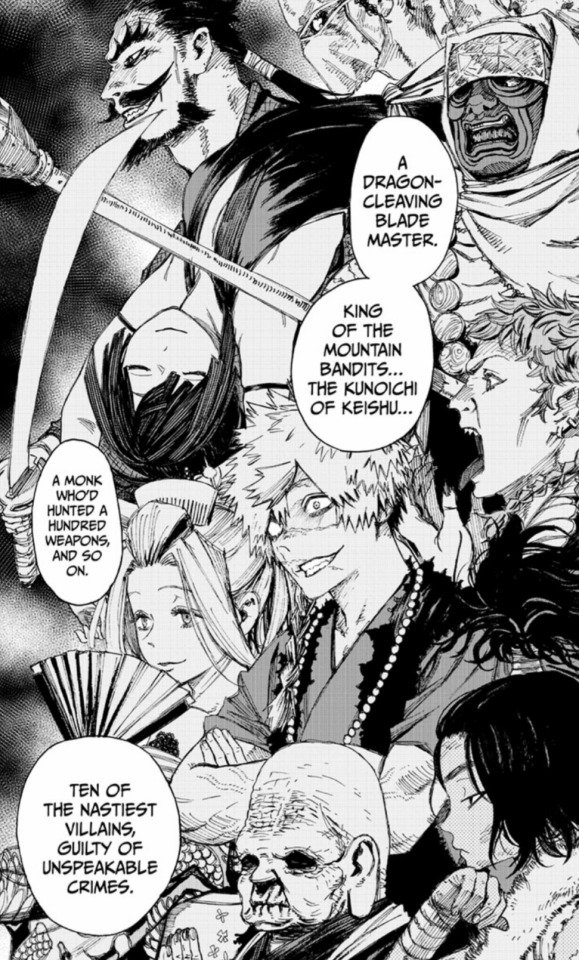
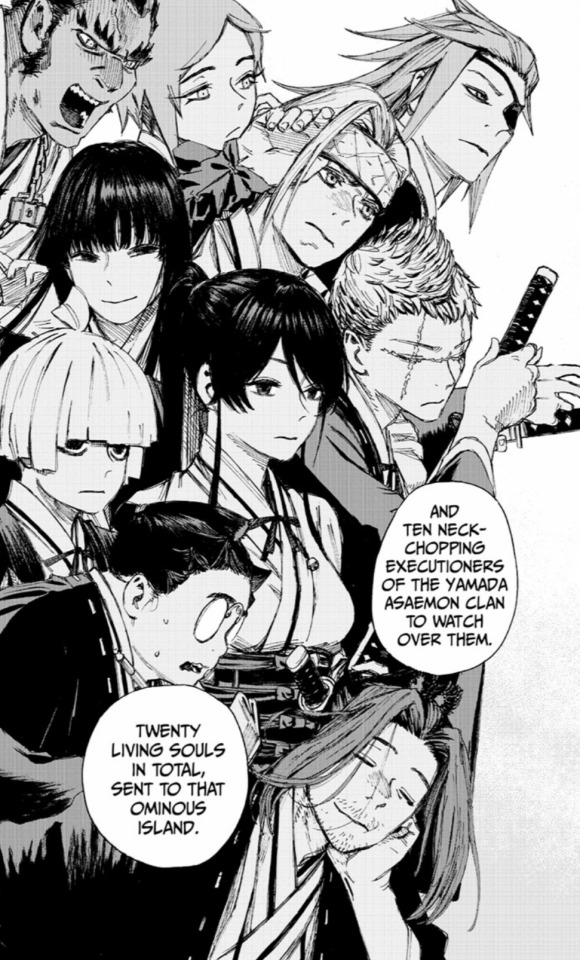

#hell's paradise: jigokuraku#hell's paradise#jigokuraku#hells paradise#side story#forest of misfortune#tamiya gantetsusai#rokurota#warped keiun#moro makiya#yuzuriha#aza chobe#nurugai#horubo#akaginu#sagiri#eizen#fuchi#tenza#senta#jikka#shion#shugen#rien#yuji kaku
29 notes
·
View notes
Text
Rokurota the giant of Bizen is a feminist ally actually.
20 notes
·
View notes
Text
Rokurota, il gigante di Bizen.
#anime#animeita#anime gif#anime italiano#animes online#youtube#manga aesthetic#hellsparadiseita#gabimaru#yamada asaemon sagiri#sagiri jigokuraku#hellsparadiseedit#hells paradise#hell's paradise#rokurota#genji yamada asaemon
4 notes
·
View notes
Text






🥲
14 notes
·
View notes
Text

6 notes
·
View notes
Text




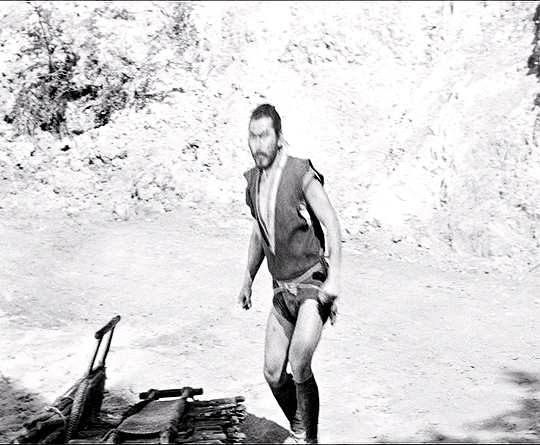


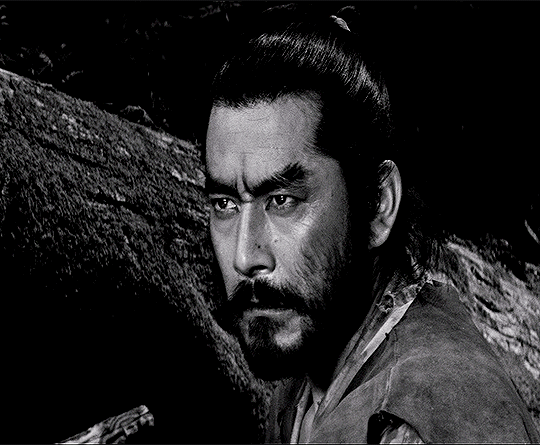
Toshiro Mifune as General Rokurota Makabe in
THE HIDDEN FORTRESS (1958)
dir. Akira Kurosawa
#filmedit#filmgifs#movieedit#moviegifs#dailyworldcinema#classicfilmsource#classicfilmblr#toshiro mifune#akira kurosawa#the hidden fortress#he's fr sexy as hell in this one and for literally no reason
194 notes
·
View notes
Text
Two Flavors of Japanese (BL) Cinema
Recently I came across a post that proposited that Japanese cinema hadn't changed since the 1950's and came in, essentially, two types.
Let's discuss that.
I can’t go into the history of all Japanese cinema in a singular blog post like that’s just not possible, there’s literal books and classes you can take on this subject, and I will be linking further reading down at the bottom of the post so you can do just that.
This fact alone, should already disprove the point that Japanese cinema hasn’t changed since the 1950’s. Other than the fact that like, Japan isn’t a static society that is forever unchanging because human beings do not work like that.
Which is why I’m writing this essay at all.
I love cinema, I love storytelling and filmmaking. And, frankly, I may not be an expert but I am annoying. I own that.
Japanese cinema has held influence over many directors, writers, animators, and so forth.
Just watch this playlist of Sailor Moon references across various cartoons. Or how Satoshi Kon influenced the work of Darren Aronofsky and Christopher Nolan. Or how James Cameron and the Wachowskis were both influenced by Mamoru Oshii’s 1995 Ghost in the Shell. And then there’s Akira Kurosawa who’s been cited as a major influence for directors like: Steven Spielberg, George Lucas, and Martin Scorsese and a slew of others.
I want folks to know there’s a slew of amazing films from Japan and that distilling the industry - the blood, sweat and tears of its creators - to a strict dichotomy of this or that, either/or is disrespectful at best and xenophobic at worst.
It’s also just a shame because, like, guys there’s so many great films from Japan! There’s also probably a lot of great live action shows from Japan but I’m not super knowledgeable about them - I mainly watch anime so that’s not a great metric in terms of Japanese television - so I’m just talking about films in this post.
Ok so main points I’m gonna address:
Japanese Cinema hasn’t changed since the 1950s
Japanese film style falls under an extreme dichotomy of cinematic/sweeping (described as “atmospheric”) or cartoonish/slapstick (described as “live action manga”)
Baby does any of this have to do with BL? (no, but it IS more gay than you think)
With these four films: The Hidden Fortress (1958), Lady Snowblood (1973), Gohatto (1999), and Kubi (2023).
I picked these four because they’re all “period pieces” taking place feudal Japan - or with the aesthetics of feudal Japan, The Hidden Fortress nor Lady Snowblood aren’t based on actual historical events, like Gohatto and Kubi are, however loosely, but take place in an amorphous 15th to 18th century Japan - and I think they strongly show the development of this singular genre in Japanese cinema.
Plus the latter two films, Gohatto and Kubi, are gay as fuck and I know my people.
[you can also read this post on this blog post which includes additional links as tumblr has a limit and for easier readability as this is a long post]
The Hidden Fortress
youtube
Released in 1958, directed by Akira Kurosawa it’s probably the most well-known film on the list. It’s a film that exists within the “Golden Age” of Japanese cinema alongside films like Kurosawa’s own Seven Samurai (1954), Yasujirō Ozu’s Tokyo Story (1953) and Kenji Mizoguchi’s Ugetsu (1953).
It was also the era where, after the American Occupation post-WWII a boom of movie distribution took place with new film studios such as: Toho (y’all know them from any Godzilla movie ever made), Toei (if you know One Piece you know Toei but they’ve done a ton of films both animated and live action) and others.
The story is straight forward, two peasants, Matashichi and Tahei who bicker their asses off like an old married couple the entire film, happen upon a Very Hot Man with the Only Thighs Out (Toshiro Mifune was a BABE) named Rokurota and his companion a icy young woman named Yuki.
Matashichi and Tahei have just escaped like, a ton of ~circumstances that include failing to become samurai, being broke as fuck, getting captured and forced into servitude - don’t worry that lasted like 6 hours tops - and then find gold hidden in a stick on a mountain.
Turns out Rokurota has all the stick gold they could want! So they team up neither realizing Rokurota and Yuki are actually part of a clan that’s been recently wiped out and they’re on the run from a rival clan who has wiped theirs out. Yuki is the princess of said clan and it’s only survivor, while Rokurota is her samurai general and retainer.
Tahei and Matashichi, living in ignorance of these facts, try to steal the gold away from them because they live that hustle life until the end when all is revealed and Yuki grants them both with a gold piece to share (this is a really big piece of stick gold).
There’s other things that happen, like a fight scene between Rokurota and rival clan member, Yuki owning every single scene she in - I fucking love her - but that’s the gist.

The story is, again, pretty uncomplicated, it balances the comedy of Tahei & Matashichi with the stoicism of Rokurota and Yuki well, and all the acting is strong. In terms of its film style, by modern day standards it’s not especially “cinematic” Kurosawa doesn’t favor fanetic camera movements, his camera is often very still and the movement he employs is often in individual character ticks, and/or background set pieces. This film has a lot of great set pieces.
Kurosawa didn’t employ camera techniques like panning, he doesn’t really do extreme close ups, there's no swooping shots or fancy tricks, I’d say a majority of the camera shots in The Hidden Fortress are a combination of mid, and wide, with a few mid-close ups. One thing to notice is Kurosawa’s use of scene cuts; instead of a cut he used pan sweeps to change scenes. If you’ve ever watched a Star Wars film you know exactly what I mean.
The Hidden Fortress, first and foremost, is an action adventure film. It has more in common tonally with Top Gun Maverick or Star Wars A New Hope, in that it's straight forward, sincere, and grand in scale, grounded by a very honest set of characters who are strongly motivated.
I feel like in modern day discussions we association “action/adventure” films in a sorta of negative way; this is probably due, in part, to the oversaturation of the high budget blockbusters of the last ten years - oh MCU, how you’ve fallen - that are overly bombastic, overly complicated, overly connected, and the root of what audiences connect with - the characters - tends to be lost.

Scott Lang's motivations in Ant-Man and the Wasp: Quantumania are to protect his teenager daughter and the family he's built, which are simple, strong, and relatable character motivations. However, they got lost in the conventions of the plot, the frantic energy of the film, the simple amount going on around Scott that his motivations become less a central focus and thus he becomes small within his own film. We, the audience, become distant and it grows more difficult to connect with what's happening. This can still work on some level, the Fast and Furious franchise isn't successful because it's sophisticated, but the Fast-chise has embraced it's cheesier conventions and spectacle, while blockbusters like the MCU's output, simple juggle to much all at once. It also helps that while the cast keeps growing in the Fast and Furious films, there's still less than ten characters you have to actually know and care about. To fully understand and connect with the characters of The Marvels, you have to watch Ms. Marvel and WandaVision on Disney+ and the task becomes more akin to homework than simply the enjoyment of watching a movie.
The epic scale grows so large it feels daunting, rather than exhilarating.
I think this is why a film like Winter Soldier, more so than most MCU films of the last decade, has continued to be a fan favorite of the universe and of blockbuster lovers whether you are a fan of the MCU or not. At its root, Winter Soldier is character driven, with deeply motivated characters, which is what makes the action and adventure aspects stick.
The Hidden Fortress is similarly character driven with a simple and straightforward story that is about honor, loyalty, a princess, a loyal samurai/knight, rebuilding a decimated clan, and two “normal” characters to keep everything grounded and relatable. Which in turn, helps make it timeless. While the filmmaking itself isn't grandiose as what modern audiences may be used to, Kurosawa knows how to direct a scene and more than that, direct his actors. Mifune is commanding as always, but for me, it's really actress Misa Uehara as Princess Yuki that steals the movie.
Lady Snowblood
youtube
Released in 1973 and based on a manga of the same name by Kazou Koike and Kazuo Kaminura, directed by Toshiya Fujita, Lady Snowblood and its sequel Lady Snowblood: Love Song of Vengeance are considered cult classics. Lady Snowblood, famously, is Quentin Tarantino’s inspiration for his Kill Bill saga (like, a freaking lot).
Lady Snowblood is a part of the era of “new wave” and “pink films” that were emerging in Japan and elsewhere. Stateside I think a close equivalent to both the style and content of Lady Snowblood and other films like it are exploitation films. In fact while watching Lady Snowblood I couldn’t help but get exploitation film vibes just off the aesthetics and thematics of the film itself.
To break down Lady Snowblood’s plot it goes like this: Yuki is tasked with getting revenge on four people who had a hand in her father, and older brother’s murder, and her mother’s rape (which is seen on screen so warning for y’all this is def a Does the Dog Die movie).
Yuki’s mother kills one of her rapists, but is imprisoned before she can kill the others and while in prison she purposely gets pregnant so her child can carry on her revenge after she dies. Yuki is born, and raised by one of the fellow inmates and a priest who trains her in martial arts. She’s raised as a “demon”, whose only purpose is revenge for her mother, father, and brother. And boy does she get revenge the film is violent and graphic (even if by modern day standards the blood looks fake as fuck the emotions are there).
Like The Hidden Fortress this film is very character driven, with a highly motivated protagonist but it’s also revels far more in it's violence and the spectacle of that violence. Yuki, in comparison to her earlier counterpart Princess Yuki, is the driver of the action in the story. She's an active participant in the plot, and the story centers around her. Princess Yuki is commendable, she's compassionate, and she makes decisions, but the story is more about what she represents - a fallen princess - than what she does. She's symbolic, the embodiment of a leader, a samurai spirit of nobility who becomes a leader worth following. Yuki, on the other hand, needs no protection from others, she's a much more direct and active part of the story since the story is hers - and her mothers - she's more elegant than regal, and there's nothing necessarily 'noble' about her. She's not seeking to rebuild her clan as a leader, her motivations are singularly about her revenge quest to fulfill her mother's dying wish.
In some ways, they're very similar - Yuki also feels compassion for another woman who's been used by the men around her as Princess Yuki does - and in others they are very different and speak to the changing expectations and idealizations of women from the 1950s to 1970s.
Lady Snowblood is also way more violent than any Kurosawa film I’ve watched including The Hidden Fortress. While there is action in The Hidden Fortress, it’s all employed with specific purpose. Which is one of Kurosawa’s strengths as a director. It’s calculated and singular. Yes blood spurts up in Yojimbo but it's limited; quick and efficient, with more in common with John Wick or Collateral than the more fantastical and aesthetic Tarantino or Robert Rodriguez fare.

Lady Snowblood revels in the aesthetic violence, there’s no “purpose” for Yuki to cut an already dead person in half, she does it out of pure frustration and for the glory of showing the audience that internal rage. Of a body hanging, dripping blood and gore onto the clean floor as the curtain draws to a close.
The film also features on screen rape, sex, and nudity which The Hidden Fortress does not. There’s an implication that characters in the film would assault Princess Yuki if they could, but nothing ever goes beyond brief implication (still gross tho guys come on). Whilst in Lady Snowblood, the rape is brutal, the violence is brutal, and the emotions are far more intense because of it all.

The allowance - for lack of a better term - of this kind of material showcases a cultural shift overall in the terms of visual storytelling filmmaking began experimenting with in telling, and in what audiences were responding too. Lady Snowblood was a beloved success for its overall low budget. In comparison to the two, The Hidden Fortress is filmed better, with more technique and focus, Lady Snowblood almost seems rustic in comparison, but it's a sort of rustic that speaks to experimentation.
Low angles from a characters pov staring high above her, extreme zooms on Yuki's burning eyes, the oversaturated colors of red-orange blood or green walls or white clothes, the starless pitch black sky as powdery snow falls. The images are arresting even if at times they're choppy, and while the film opts for non-linear chapter breaks to create a story flow in comparison to Kurosawa's iconic screen swipes and straight forward narrative, yet, both work.
Gohatto
youtube
Behold, the promised gay cinema I promised.
Gohatto is a 1999 film directed by Nagisa Oshima based on the short story, Shinsengumi Keppuroku by Ryotaro Shiba.
Gohatto is a pretty late entry in the new wave/pink films of its heyday but those films were Oshima’s bread and butter. Often dubbed as one of Japan’s cinema outlaws for his anti-establishment films, one of his films, Night and Fog in Japan (1960) was pulled from theaters all together. Most people in the west will probably know him even tangentially for his queer film Merry Christmas Mr. Lawrence starring David Bowie and Beat Takeshi or for this absolutely banger quote from the New York Times article, A Japanese Film Master Returns to his Cinema:

(If you’re a BTS fan, the composer Suga and RM like, Ryuichi Sakamoto, both starred and composed the main theme of Merry Christmas Mr. Lawrence Forbidden Colors, he plays the guy in love with David Bowie’s character)
Gohatto combines the setting of a Kurosawa film, with the more experimental storytelling of Lady Snowblood, whilst imbuing the film with more surrealistic elements and more complexity. And making it gay like - for real for real.
Gohatto goes like this: it’s the late 18th century in Japan, everything politically is on shaky ground, and the shinsengumi are looking for newbies to join ranks. Welp, they find two promising newbies and wouldn’t ya know it one newbie, Kano, is like, hella pretty. He’s got bangs.
He’s so pretty in fact that all these other dudes in the shinsengumi crew wanna smash, I mean down bad like the Taylor Swift song or whatever I don’t listen to Taylor Swift.
This is all treated with a lackadaisical normality; there’s teasing about “I never considered sleeping with a man before, but damn that Kano kinda…” but there’s never a moment of “omg they’re GAY?”
Beat Takeshi’s - who’s also in this film, he’s been in a lot fo queer films I'm noticing - character Vice-Commander Hijikata Toshizo often asks other characters not if they’re attracted to Kano - the implication being that they are - but rather if they are in love with Kano. Because lust is fleeting, but love is dangerous to your duty.

Kano also might be a spy, or a murderer, it’s all very ambiguous and the ending isn’t a “happy” one. This isn’t a film about a love story of any sort, it has more in common with erotic thrillers than the action adventure of The Hidden Fortress, or the rape revenge fantasy of Lady Snowblood. Where as the former films have definitive endings, Gohatto ends ambiguously.
What actually happened? And why did it happen? What did it all mean, in the end? The film offers no strict answers to these questions, asking instead, that its audience to come to their own conclusions. It’s also much more historical than the previous two films, taking real life historical figures like: Hijikata Toshizo, Okita Soji, and Kondo Isami and asking the question, “hm, what if they all maybe fell in love with this super pretty man before being overthrown and what does that mean metaphorically?”
The Hidden Fortress doesn’t ask its audience to interrogate society in any meaningful way and that’s not a knock against it, it’s just an observation. Lady Snowblood specifically presents the plight of women, and a slight take on classism within the system, through the lens of violence and destruction. Gohatto is much more metaphorical, it’s not providing the audience with a direct message like the former two films, but presenting it’s thematics in a much more abstract way. The Hidden Fortress is an action adventure, with heroes who achieve their goals and overcome their obstacles. Lady Snowblood is a rape revenge with an understandable protagonist who succeeds in her bloody revenge. Gohatto has no heroes, and offers no straightforward catharsis at the end of its story story.
Its film style is also far more atmospheric compared to the epic scale and straightforwardness of The Hidden Fortress, or the lower budget charming violence of Lady Snowblood.

There’s lots of mood lighting, overhead shots of characters dimly lit, camera cuts to rain after two characters have sex, extreme close ups of one character observing Kano’s eyes and lips. It’s not a black and white film like The Hidden Fortress, but it’s not nearly as saturated in color and brightness as Lady Snowblood.
Lady Snowblood drips with color, and light, even at night there always almost seems to be a spotlight on Yuki with an empty starless sky in the background. Gohatto is much more grounded in realism than high visual aesthetics, opting to create more of a lingering dreamlike trance or fog to the cinematography when the story’s final act begins to unfold.
Yet, one thing Gohatto has in common with both The Hidden Fortress and Lady Snowblood is its violence; operating somewhere between the two. Like The Hidden Fortress the violence is quick, purposely, and specific, and like Lady Snowblood blood spurts, gushes, and heads are displayed proudly and grotesquely.
Kubi
youtube
Kubi is a 2023 film directed by Takeshi Kitano aka Beat Takeshi - this is the third time his name has been dropped in relation to a queer film in this post go Beat Takeshi - based on a novel of the same name that Kitano also wrote.
Kubi is like Beat Takeshi’s sengoku period slash RPF fanfic come to gruesome bloody (literal, not British) life. A period piece epic; Kubi is both about samurai warlords and a historical event known as the honno-ji incident, which took place in 1582. It features various historical figures like Oba Nobunage - if you’ve watched some anime or played some JRPGs you’ve probably at least heard of this name before - and other prominent historical figures of the time.
The basic gist of the movie is Oba Nobunage is both really good at his job, so he’s super powerful politically, but he’s also a grade-a asshole whom all the other important samurai lords fucking hate. However, they also all fucking hate each other and all want to take Nobunage’s place and get all that sweet, sweet power for themselves. The honno-ji incident involved one of these guys doing a coup for reasons still unknown today and then pretty much almost immediately dying swiftly after leaving another samurai lord to take over.
Kubi takes these historical events, and is like “okay but what if we added some gay innuendo and gay sex to this drama?” with more beheadings than a French revolution.
Out of all the films on this list Kubi is, admittedly, the one I enjoyed the least, however, it’s an interesting retrospective on the growth of both the Japanese film industry and this specific genre in and of itself.
Kubi’s film style is very modern, it’s beautiful, it’s sleek, it’s expensive looking. And yet there’s specific scenes that feel like callbacks to the Kurosawa era, like the black and white flashback between Nobunage and his fellow samurai lords. One of Kurosawa’s top films was Kitano’s Hana-Bi (1997), and Kitano has worked with Kurosawa’s daughter on costume design on four other films as well, so these references feel not only purposely because of general influence but also referential in a way.

In terms of story and tone, Kurosawa’s The Hidden Fortress is sincere and straightforward, Lady Snowblood is experimental and fearless, Gohatto is introspective and suspenseful, whilst Kubi is unrelenting and even feels mocking at times. There is no break in Kubi's violence, there's almost no tenderness or softness, characters are selfish, and self-centered. The selfish, but joyful peasants in The Hidden Fortress don't exist here, and are replaced with a peasant character who murders his own friend and then rejoices over being relived of his family once he discovers they were murdered too. At times, Kubi feels like a subversion of the more glamourous depictions of the samurai in film. Which feels as though following similar footsteps established in Gohatto which also explored, subtextually, the faults within the samurai media persona.
At times the film feels almost like a dark comedy, it doesn’t glamorize these samurai warlords, nor their clans, nor their ideals in the way The Hidden Fortress does, nor does it interrogate them in the way Gahotto does. Instead the story at hand is presented with a brutal realism, objective if a bit mocking with a side order of gay sex. Which isn’t presented in a mocking way so much as just an everyday aspect of life.
When Mitsuhide and Murashige are caught by spies sleeping together there’s no shock or awe about it, just a calm report and the bigger issue is Mitsuhide hiding a fugitive more so than him sleeping with a man.
Similarly, when Nobunage is literally fucking one of his vassals in front of Mitsuhide, it’s not to disgust the other man, but rather a powerplay of sorts to make the latter jealous - at one point Nobunage promises if Mitsuhide accomplishes a mission for him, he’ll sleep with him - and it seemingly works to some degree. There’s subtext throughout the film that Mitsuhide might be, if not in love with Nobunage, want him in an obsessive way all the same (including being down to bone).

Like with Gohatto the queerness is inherent, just a part of the culture. It’s not “romance” by any means, but it is simply a part of life and the culture itself.
In terms of characters, Kubi's characters couldn't be more different from the characters in the previous mentioned films. The Hidden Fortress characters like Princess Yuki and Rokurota are easy to like, honorable, quiet, steadfast; while Matashichi and Tahei are less outright likable they offer a grounding and relatable to the big presence that are the former two. In Lady Snowblood, Yuki is quiet, calculating and menacing in her own right, truly embodying the idea of cold vengeance which makes her intriguing. In Gohatto Kano is elusive, which adds to his sensual allure, Okita is playful yet clearly hiding a more sinister air about him, and you just feel bad for Tashiro who’s pushy but seemingly sincere in his affections for Kano.
Kubi has no by-the-by “likable” characters, every character is out for themselves in some way shape or form. So much so that the brief tenderness between Mitsuhide and Murashige is like a balm to a burn. Though I did absolutely enjoy the scene-chewing of Ryo Kase who played Nobunage. While Nobunage isn't a "likable" character by any means, he was so fun and engaging to watch he became a highlight of the film.
Stylistically, this is a very modern epic film; it’s the type of film in terms of scale I imagine Kurosawa could have made if he had access to the same technology, but also wouldn’t because there’s no stillness or sincerity to it. The violence is also more in line with Lady Snowblood, but with a budget. Heads are lopped off with ease and at times with glee, dead bodies, headless bodies with crabs crawling out of the necks, a literal pile of heads for trophies it’s all here. It’s beautifully and dynamically filmed, it has a similar scale of a Lord of the Rings, or a Creation of the Gods I: Kingdom of Storms.
Big set pieces, big costumes, big landscapes, big battles, and bigger body counts. It also has the largest cast of any film on the list - kinda neat that Kitano and Asano Tadanobu were both in Kubi and Gohatto together - and the best costumes of the bunch.
It also, in my opinion, has the most complicated plot of all the films because of the heavy political intrigue - though this, admittedly, could be because of the culture gap as I’m not overly familiar with Japanese history.
Okay so like, where does all this leave us in terms of those original bullet points?
The Original Bullet Points
Japanese Cinema hasn’t changed since the 1950s
If there's one thing - well okay many things cause I'm greedy but overall - I hope I've been able to outline here with these four films is that obviously Japanese cinema has changed since the 1950s. And thoroughly at that. Not just in terms of style, but in terms of character presentation, tone, stories technology, experimentation, and a growing reflection of the shifting and developing culture.
It’s not simply that all four of these films are different stories, but that all four of these films are addressing different aspects of their modern culture via these period pieces, as well as, viewing this time period in ways that reflect the filmmakers own experiences and how they feel or felt about the world.
Kurosawa was born in 1910 to Kitano’s 1947, Fujita and Oshima’s 1932. Kurosawa’s father was a member of an actual samurai family, his worldview would be thoroughly different from someone like Oshima, or Kitano, or Fujita’s. Some overlap, sure, but also still thoroughly different.
And I feel that you can see that in their films; Kurosawa’s samurai films are almost referential at times, not always, but his work with Toshiro Mifune often leans that way; in The Hidden Fortress Mifune’s Rokurota is deeply loyal to his lord, the Princess Yuki, to the point that he won’t shed tears over his own sister being executed in her place. He spares the life of a rival because he respects him even though they stand on opposing sides.
The samurai in Gohatto and Kubi aren’t nearly so idealized nor idolized, there’s very little “honor” in Kubi and even less loyalty. Whilst in Gohatto there’s a deep and subtle interrogation of the strict and oppressive bylaws of the shinsengumi. In one such scene, Kano is having drinks with a man who is interested in him, Yuzawa, who’s passionately talking about how the shensengumi uphold oppressive ideals including classism.
[And then he jumps Kano’s bones I guess politics got the dude going lmao]
The Hidden Fortress’ Princess Yuki is at first, masculine - in story she was raised as a man rather than a princess - from the way she walks to the way she talks. She’s fierce, and upstanding, while also being compassionate to other members of her clan; even saving a young woman who’s a member of her clan that had been sold. There’s a regal quality to Princess Yuki.
In comparison, Yuki in Lady Snowblood is elegant, and feminine, before striking out violently. Princess Yuki never has an “action scene” and in fact for a chunk of the film has to pose as a deaf woman to hide her identity. While not a passive participant in the plot, nor does she directly drive the action herself. While Yuki, well the entire movie is driven by her actions and the actions of her mother. The story is first and foremost, hers.
Meanwhile women just like, they don’t exist in Gohatto or Kubi they’re like, in the ether~~~ they’re drifting, keeping out - or kept out? - of the drama.
Given the vast differences in both style, tone, story and execution, how can you say wholeheartedly that Japanese cinema hasn’t changed since the 1950s?
Japanese film style falls under an extreme dichotomy of cinematic/sweeping (described as “atmospheric”) or cartoonish/slapstick (described as “live action manga”)
I’m just…not gonna get into the overall history of Japan's adaptation of manga into live action films cause it would derail this conclusion and I ain’t got the time for that. I would like to note, Lady Snowblood is a live action film based on a manga of the same name - and it is not slapstick. It doesn’t even have comedic elements, it is a violent rape revenge story; I don’t think there’s a single moment where I chuckled. The Hidden Fortress is far lighter in tone, while Gohatto has more in common with Lady Snowblood - deeply and sincerely serious - and Kubi goes for a darker sort of comedy.

This is just incorrect information. Personally I’m of the mind that “cinematic/sweeping is too broad a spectrum to even quantify as a film genre they are descriptors.
That said, I don’t think Lady Snowblood is cinematic or sweeping. Gohatto is the only one on the list that’s even close to “atmospheric” though all four films have atmosphere - because atmosphere is a film technique it’s not a genre of film - The Hidden Fortress and Kubi are the only two I could qualify as “cinematic/sweeping” because they’re going for a larger bombastic scale. Though I feel folks watching The Hidden Fortress in the modern day might not find it cinematic because of how static and slow the film can be at times - the first act is long and drags quite a bit.
To place such a strict dichotomy on an entire industry of filmmaking is simply bad film critique at best and xenophobic at worst given the context here. I’ve only talked about four films in one singular genre, I didn’t mention the countless other new wave films, or the birth of the kaiju genre with Godzilla, the expansion into horror and grindhouse - where does a film like Tag (2015) fit into such a strict dichotomy? - nor the long, long history of animated works from various insanely highly influential and/or successful directors like Satoshi Kon, Makoto Shinkai, Hideaki Anno, Rintaro, Mamoru Hosoda, Mamoru Oshii, Isao Takahata, I mean the list goes on and on.
If you expand your horizons you’ll find so many amazing films that do not flatly sit in this one or the other imposed categorization. Think about what queer cinema you may be missing out on by adhering to this imposed binary.
Baby does any of this have to do with BL? (no, but it IS more gay than you think)

So, in the end, what does this have to do with BL? I would say it has both little and a lot to do with BL/GL which are genres all their own in Japan and other neighboring countries; as such their subject to the same waves, exploration and expansion as the four aforementioned films.
It’s easy, if intellectually dishonest and academically lazy, to look at The Novelist and What Did You Eat Yesterday and say “BL only comes in two shapes and sizes”.
There’s chocolate or vanilla and that’s it. When in reality there’s lots of ice cream flavors available, even if chocolate and vanilla are the best sellers it doesn’t mean strawberry or mint chocolate chip don’t exist.

Where does animated BL fall into this western imposed binary? How does capitalism affect the output of what gets made for the screen and how? How does the political climate affect what’s being financed? Are BL and GL works that are being made somehow unaffected, existing in a stasis state, by the works across the film industry? Even from other queer works of film? What are we, as outsiders, not considering when we engage with this media?
If we’re only looking at BL/GL for “queer representation” what films and/or television are we missing out on from these countries? What BL/GL are we missing by only engaging with what's put in front of us, and not diving deeper into learning more, expanding our individual knowledge, and experiencing stories that might take some work towards seeing? Stories that might be outside of our direct comfort zones because they don't fall into those strict if seemingly comforting boxes. What exploration into queer identity are we denying or ignoring the existence of because of these imposed binaries?
I know some folks who are more well versed in BL history that would and do consider Gohatto and Kubi BL or BL adjacent, but I also know most western, especially American, audiences would consider neither of these films BL.
So where does that leave them?
Further Reading:
Cinematic History: Defining Moments in Japanese Cinema, 1926-1953
A Brief But Essential Introduction to Japanese Cinema
Filmmaking from Japan: The Golden Age of Japanese Cinema
Nagisa Oshima: Banishing Green
JAPANESE SOFTCORE: THE LAST OF TOKYO'S PINK EIGA THEATERS
The Last Samurai: A Conversation with Takeshi Kitano
The Evolution of the Japanese Anime Industry
Check out other related posts in the series:
Film Making? In My BL? - The Sign ep01 Edition | Aspect Ratio in Love for Love's Sake | Cinematography in My BL - Our Skyy2 vs kinnporsche, 2gether vs semantic error, 1000 Stars vs The Sign | How The Sign Uses CGI | Is BL Being Overly Influenced by Modern Western Romance Tropes? | Trends in BL (Sorta): Genre Trends
#gohatto#kubi#japanese bl#lady snowblood#japanese films#ride or die#cherry magic#the novelist#chaos pikachu speaks#pikachu's bl film series
44 notes
·
View notes
Note
Lol your defending for GabiYui is really on point. I remember some watchers even said 'too bad Gabimaru's heart is stick on his wife, Sagiri is much prettier or hotter' or 'go for it Gabimaru, it's okay to have multiple wives'. Come on, are we now living in an era where a husband being loyal to his wife is something really weird? I need Gabimaru to show his ninjutsu to these people lol.
awww thank you! ofc I will defend GabiYui no matter what since this pair is so close to my heart and has actually inspired me to write better at romance (aside from the other characters from different fandoms I am in) and do my best in life (Nishinoya from Haikyuu is still my main drive but still)
now onto some big points of this ask hehe
re: "Sagiri is prettier than Yui" issue
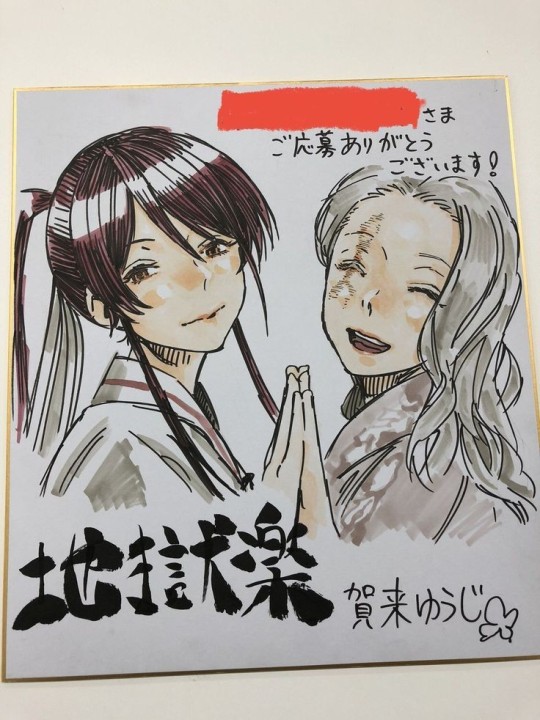
these two are absolute sisters your honor
I won't deny that sagiri is beautiful like I swear have you seen her and the way she fights back despite men looking down on her and how she swings her sword? plus episode 6 highlighted her being able to balance her emotions, making her gently kill rokurota. ugh perfection. chef's kiss. 1000/10 rating.
but ya know I don't get why people have to be like "Sagiri is way prettier and hotter but too bad Gabi is not in love with her" like what do you mean too bad? like ???? idk if it's just me but does gabimaru have to appreciate her being hot or what? plus ya know gabi is not into the appearance anyways. he even said in the latest episode (which is episode 7 as of this writing) that appearances really don't matter.
plus I don't get why people love comparing yui and sagiri's physical appearance against each other and saying "this girl is prettier" yada yada when they are both best girls with distinct beauty. in fact, there is an interview with Chainsaw Man author Tatsuki Fujimoto about Hell's Paradise author Yuji Kaku where he discussed about drawing female characters. according to Fujimoto-sensei, Kaku-sensei always drew his female characters beautifully in an aesthethic manner and his reason behind this is bcos "all girls are cute regardless so we must always draw them as cute girls" (not exact quote but you get what I mean) that's why Fujimoto-sensei added he has been trying to draw his female characters as cute as possible. so yeah both sagiri and yui are cute and pretty or whatnot. they just exhibit different vibes like sagiri has major main female chara vibes while yui is def softcore cottagecore vibes 🥰🥰🥰
besides, no matter what people say, yui will still be the most beautiful person in gabimaru's eyes. he even said so in both manga and episode 7.

note: he used the word "utsukushii" for the term "beautiful" and in Japanese, using this term means you really find a person so beautiful inside and out that it moves you emotionally so the mere fact gabimaru described yui in this manner despite her telling him that she's ugly is something else 😭🥺💖
re: "it's okay for Gabimaru to take on multiple wives" issue
(THIS ONE WILL CONTAIN MAJOR MANGA SPOILERS AND OTHER CANON EVIDENCES THAT HAVEN'T BEEN TRANSLATED OR MOST PEOPLE HAVE NO HANDS ON DUE TO LIMITED SOURCES)
here's MY NOT SO CONTROVERSIAL TAKE on this one bcos you all know my answer.
it is no doubt that gabimaru can take on multiple wives. after all, gantetsusai mentioned he has multiple wives across japan. plus their time period allows men to marry multiple women so people making this statement knows what they are saying.
HOWEVER!
I actually don't think gabimaru will engage in this sort of thing (see, I told you my opinion on this is not controversial hehe) and here's why.
we all know that osa (aka iwagakure village chief) killed gabimaru's parents and took gabimaru in, even to a point where gabimaru literally lives in the village chief's home like some sort of special treatment.
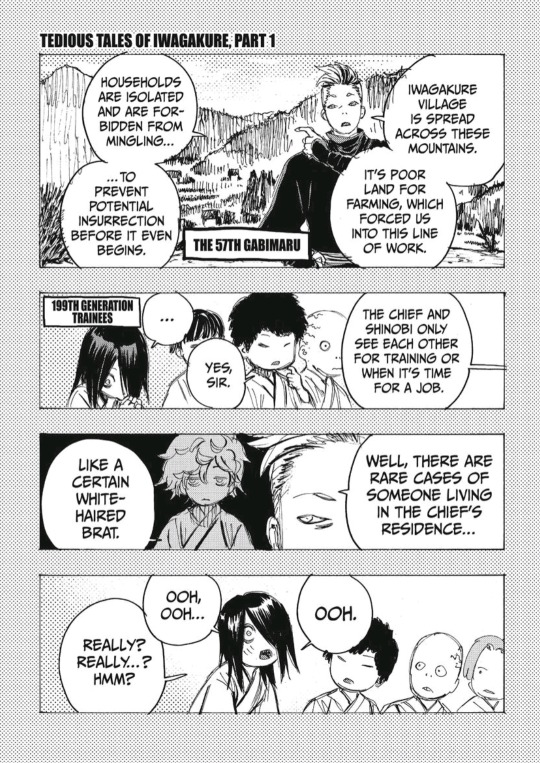
however, I think one reason gabimaru got special treatment is bcos both of his parents are high-class shinobis (like jonin level) and ofc osa saw his potential that maybe "ah this kid might inherit his parents' ninja skills or something"
plus, osa doesn't have any sons to begin with bcos surprise surprise YUI HAS NEARLY 20 HALF SISTERS with her being the eighth daughter. and accdg to Kaku-sensei, there is a major possibility of yui and gabimaru meeting as children (but alas it is hard to tell since yui has so many sisters). and yes this is all mentioned in Jigokuraku Kaitai Shinsho (pls someone translate this huhu)
so when tsuki (the toasted marshmallow gabimaru that we know) became the 58th gabimaru by killing the 57th gabimaru, he was rewarded for his skills and intellect by marrying yui. but the thing is, it's a common talk among iwagakure ninjas that osa has been looking for a successor and bcos he doesn't have a son, the only choice is to have gabimaru marry into his family (which is common in Japan)
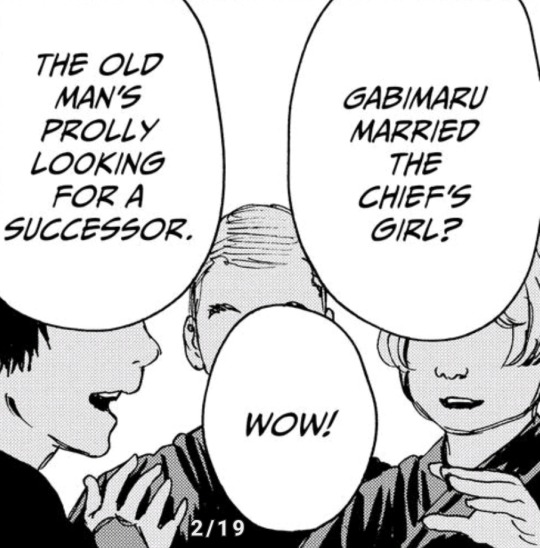
fun fact: gabimaru actually doesn't know why he was married to yui though. he even thought maybe yui has some kind of secret ninjutsu or something. he tried to find out but this boy went home and when yui greeted him with a beaming smile, he was immediately overwhelmed with feelings that he forgot his own agenda 😭😭😭
so what's the point of all this? you see gabimaru has never realized why yui was so adamant abt this sense of normalcy and all that stuff until he finally learned the meaning behind her dream. after all, in iwagakure, when a man is born, he automatically has to be a ninja and a woman has to get pregnant and bear more children that will become ninjas. and if they die during training, then they'll be replaced by another batch of offsprings that will be ninjas or vessels for children.
in short: women in iwagakure are not only beaten, but also treated as baby-making factories (ofc some of them become kunoichis but most of them just become a housewife that takes care of dozen babies). doesn't matter how young or old. as long as you can get pregnant, then you go do your duty for iwagakure. hence why yui loathed this kind of set up and when she voiced out her want for normalcy, she paid the price by having her face scarred.
but what if a girl doesn't get pregnant? ahh then the guy will take another wife, get her pregnant, then process repeat and repeat. it's a cruel cycle that never ends.
in osa's case, it took him like so long before finally accepting his wives cannot give him a son. and in my own opinion, these things can influence gabimaru into not having a harem marriage in the first place. like imagine marrying multiple women just for the sake of a duty.
besides, given how bad he's down for yui, I don't think he would want another woman other than her. like srsly gabimaru has so much respect for her and having a harem marriage would defeat every single thing he and yui are fighting for.
after all, gabimaru hates the idea of women being treated as broodmares. remember, his wife has been "marked" for the same reason. like he really abhors the idea and there are theories of yui being possibly pressured into having children with gabimaru and tbh it all boils down into this canon evidence from the manga.
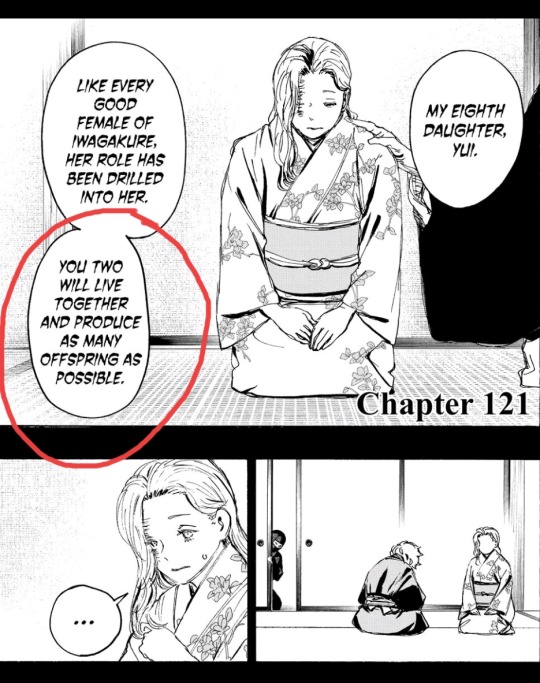
plus I hate it when people normalize cheating like "gabi might cheat with sagiri" or something like srsly? I thought we were all past NTR and all that stuff? if you are into NTR kinks, there are various media forms that can cater to that and sadly, Hell's Paradise is not the medium for NTR as much as these people want it to be.
that's all for today, folks.
#jigokuraku#hell's paradise#answered asks#admin summer#yamada asaemon sagiri#gabimaru the hollow#sagiri#gabimaru#yui jigokuraku#yui hell's paradise#gabimaru x yui#gabiyui#gabimaru and yui#gabimaru's wife#yuji kaku
108 notes
·
View notes
Text
What "The Hidden Fortress" (1958) tells us about the Jedi's status in the Prequels.
In 1999, George Lucas had this to say on BBC Omnibus: A Long Time Ago: The Story of "Star Wars" and then The Phantom Menace's director's commentary.
“I greatly admired Kurosawa, especially the film Hidden Fortress, which told a story from the point of view of two serfs, two slaves...

... peasants who tag along with this famous general and a princess-- y'know, royalty. And the whole story is told from their point of view. And I like that idea.
I like the idea of telling a story from the lowest person's point of view, uh, in the food chain, and that's how the story got to be told by Artoo and Threepio.”
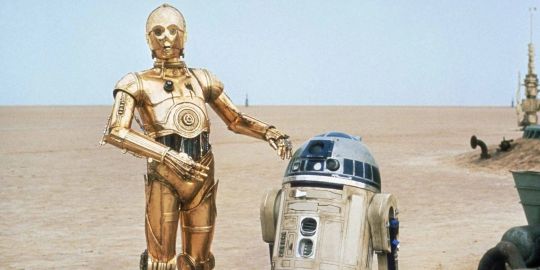
“[The Phantom Menace] is told primarily from the Jedi's point of view, but the story that's being told is essentially the story of Queen Amidala and her plight of having her planet blockaded. As in, say, Episode IV, where the story is told through the eyes of the droids, in this one, it's told through the eyes of the Jedi.”
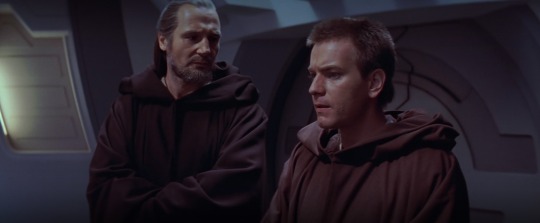
“But [from the moment we get to Coruscant, Anakin and Jar Jar] are standing on the sidelines. It's a little bit a riff on the very first film where the story is told through the point of view of the droids, who were sort of the lowliest characters.”

“And in [Phantom Menace], I'm doing it through - primarily - the two Jedi, but then the secondary characters are also carrying a lot of the weight when the Jedi aren't around.”
George Lucas draws a comparison between lowly characters like Hidden Fortress' peasants Matashichi and Tahei, the droids in A New Hope, as well as the Jedi in The Phantom Menace.
What do they all have in common? They are all the lowest-ranking characters in their respective films. Repeat: the movie frames the Jedi as almost at the bottom of the food chain.
Because of course they are. Functionally, they're just diplomats. They hold no political power whatsoever and barely have any authority .
What little authority the Jedi do have in TPM comes from the Queen's young age, which allows them to ease into a more advisory position, and Qui-Gon's rebellious streak. And even he's explicit about the fact that his mandate has limitations.

The only characters "below" them in status are Jar Jar, an exiled Gungan, and Anakin, who just yesterday was still a slave kid, Artoo the literal object and that's it!
Also the other Prequel films are consistent with this portrayal. Who do we see lower in status than the Jedi? Dexxter Jettster and the clones. Everyone else is pretty much above them.
Yes, the Jedi are part of the system, but they're not as high-ranking as you'd think. Yes, they have Force Powers, but that means squat when put against political power. So, like, to expect the Jedi to...
influence the decisions of the Senate,
wage a war against the Outer Rim to end slavery,
or blatantly refuse an order to join the war effort,
... is incredibly unreasonable.
They're not meant to be seen as "the elite, peering down upon the people from their ivory tower".
They're the servants! Servants of the Republic.
And they're seeing their higher-ups destroy what they should all stand for, but are unable to stop them.
Later on, with The Clone Wars, we are introduced to civilian characters and from their point of view, the Jedi are ultra powerful and are highly placed and "should do more but don't".
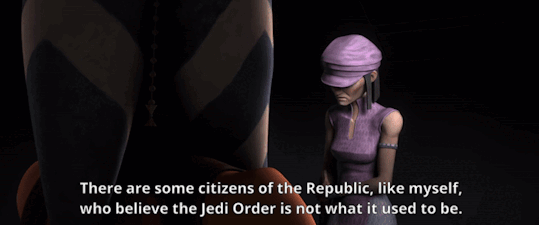
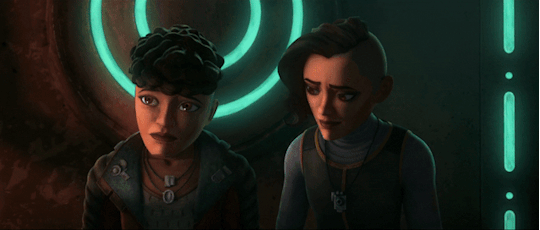
It makes sense that these characters would see the Jedi as 'the elite'. But they don't have the full picture.
We, as the audience, do.
So we know that the reality is more along the lines of the Jedi "should do more but can't".
After all, we are made privy many instances of the Jedi speaking up and trying to change politicians' minds, only to be dismissed and overruled at every turn.
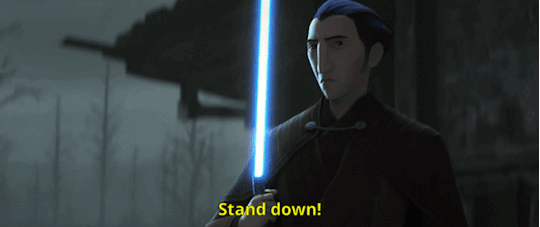
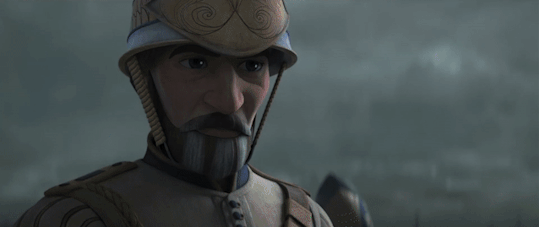




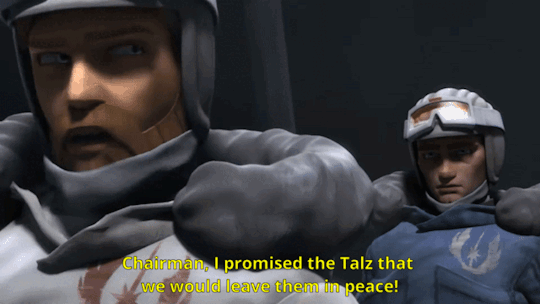
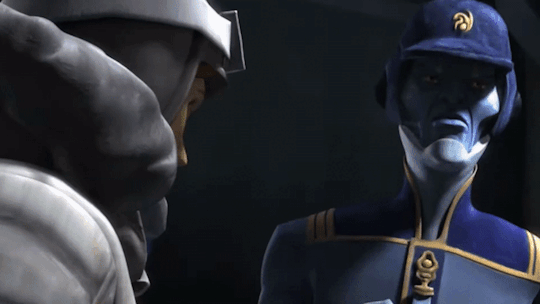

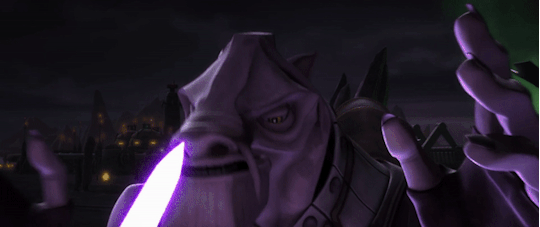
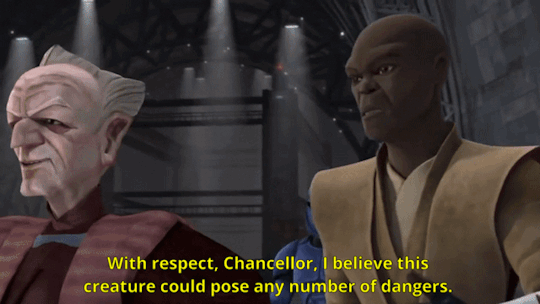
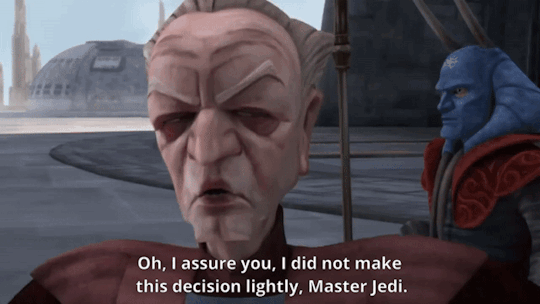


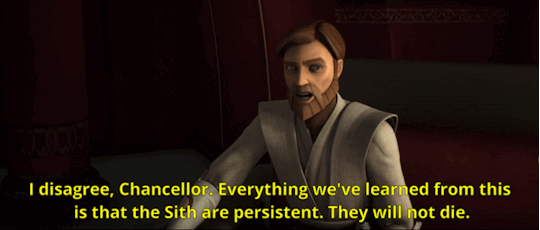

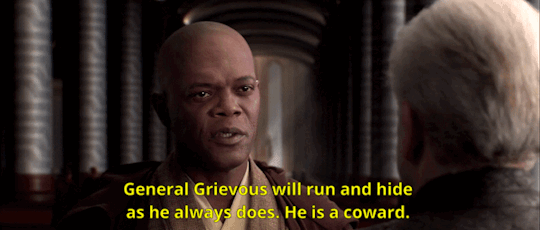
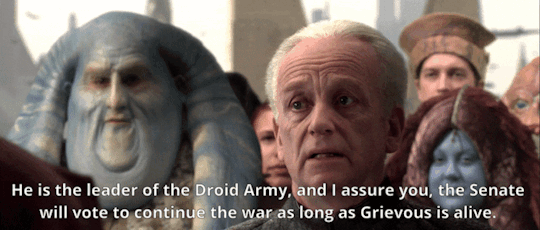
↑ these aren't even all the times we see it happen, btw, there's more examples...
So at some point, if you - as an audience member - see all this and are still saying "the Jedi should've done more!" I really need to know... what more could they have done?
Take control of the Senate?

That'll result in a dictatorship, there's a reason they waited as much as they did before trying to take down Palpatine.
Power corrupts and they're wise enough to know it.
Don't join the Republic in the first place?
George Lucas never frames the Jedi's involvement with the Republic as a bad thing. In the foreword to Shatterpoint (2004), he says their being part of the Republic led to 1,000 years of prosperity.
Where's the issue, then? Well, it's a two-man job and the Jedi's bosses, the Senate, grew corrupt and stopped doing their part. They stopped carrying their end of the couch.
But “no Jedi in the Republic from the get-go” means the Sith will rise to power even faster. Fun!
Stay neutral in the war?
The Separatists were killing civilians and testing weapons on neutral systems, or enslaving them.


The choice put before the Jedi was "do what we tell you and fight, or let people die".
But also, out-of-universe... do you really think Palpatine, genius politician, master of spin, can't re-frame the Jedi staying neutral in a negative light?
When they joined the war, he unleashed propaganda that either directly (on the Separatist side) or indirectly (on the Republic side) framed them as "warmongers who corrupted their values". If they don't join, they're "apathetic cowards who care more about their own values than the lives of the people they're supposed to protect".
So either way, Order 66 comes around, wipes them out and the Republic goes "good riddance".

So what else could they do?
The answer is "not much".
Because the whole point of the narrative is that Palpatine checkmated them by taking the fight to a field the Jedi had no experience in or right to meddle with: politics.
So if you look at these characters who are nowhere near the top of the food chain, and say "well, why didn't they fix things?" I'm sorry to say you're missing the point of the narrative.
Or maybe you do get the point of the narrative and just aren't trying to be fair...

... in which case, at least be consistent and also argue:
"Why didn't Threepio & Artoo do more to save the Rebel crew of the Tantive IV from the stormtrooopers?!"
"Why didn't Matashichi & Tahei do more to save the Akizuki clan?!"
#HINT: the answer to both those rhetorical questions is “there was nothing they could do”#Also while we're on 'Hidden Fortress' - it's also worth pointing out that Qui-Gon and Padmé's dynamic on Tatooine in TPM#is very similar to the dynamic of General Rokurota and Princess Yuki in 'Hidden Fortress'.#The older warrior looking after the royalty teenage girl who is dressed as a peasant so as to not draw attention because she's on the run.#The Hidden Fortress#Akira Kurosawa#George Lucas#Artoo#Threepio#c3po#r2d2#lucas quotes#meta#on the jedi's involvement in the clone wars#in defense of the jedi#jedi order#qui-gon jinn#the phantom menace#star wars#long post
882 notes
·
View notes
Text

#jigokuraku#hell’s paradise#anime#mappa#rokurota#jigokuraku spoilers#hells paradise#official media#official art
5 notes
·
View notes
Text
one of the reasons jigokuraku is so refreshing to me is because Sagiri and Gabimaru remain completely platonic the entire time and there’s no forced awkward romance between them. Gabi is already married and his whole motivation is to go home to her. This allows his friendship with Sagiri to really flourish without the baggage of “oh they’re gonna end up together because they’re the two leads of opposite genders”
Sagiri and Gabimaru both reflect each other in that they’re essentially having to learn the same thing. Both of them feel like they need to restrain their emotions because it makes them “weak”. Sagiri is about to figure it out quickly, but it isn’t until her fight with Rokurota that she actually internalizes it, and once she does, she becomes stronger than Gabimaru—something Gabimaru himself points out.
#I firmly believe that the reason Sagiri has less fights than Gabi is because she would simply solve things#jigokuraku spoilers
23 notes
·
View notes
Text
A few Jigokuraku fic ideas
Cuz I love "what if this instead" fics:
What if Hourubou jumped Moro Makiya at the start of the expedition, instead of Choubei? The Apostate would probably have died at the hands of the serial killer monk, and then Yuzuriha would not have Makiya to experiment on - she'd need to use someone else, instead...
What if Akaginu had been paired with Genji initially?
What if Zhu Jin had interrupted Rokurota's attack on Eizen?
4 notes
·
View notes